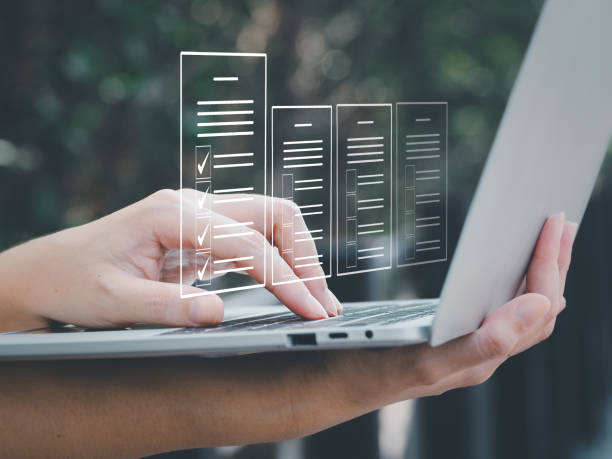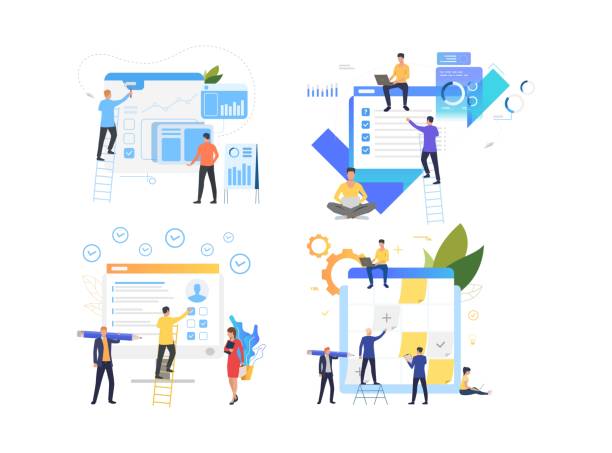Introduction to On-Page SEO and Its Critical Importance

In today’s complex and competitive internet world, On-Page SEO is considered one of the #most important pillars for the visibility and success of any website.
This educational and explanatory approach includes all actions you take within your website to improve its ranking in search engine results.
From content optimization to technical site structure, every component plays a vital role in attracting organic and targeted traffic.
Without sufficient attention to search engine optimization, even the best content may get lost among the vast amount of internet information.
The importance of On-Page SEO is not limited to higher rankings; it also significantly helps improve user experience (UX) and increase conversion rates.
A website that is properly optimized in terms of On-Page SEO will be more attractive and accessible to users.
This means visitors spend more time on your site, view more pages, and are likely to become loyal customers.
In fact, On-Page SEO is a strong foundation for all your digital marketing activities.
A deep understanding of how Google’s algorithms work and the correct implementation of On-Page SEO principles can make the difference between an ordinary website and a successful brand.
These actions include optimizing title tags, meta descriptions, URL structure, proper use of heading tags, image optimization, page load speed, and internal linking.
Each of these elements helps search engines better understand your content and assess its value for users.
Therefore, investing time and effort in On-Page SEO is an essential step for any online business.
Remember that success in SEO is an ongoing process and requires continuous updates and adaptation to algorithmic changes and new trends.
Therefore, continuous education and implementation of On-Page SEO principles are crucial for your website to always remain at the top of the results.
Below, we will delve into each of these aspects to provide you with a complete guide.
Are you tired of your company’s website not meeting your expectations? With Rasaweb, design a professional website that showcases the true face of your business.
✅ Increased attraction of new customers and sales leads
✅ Increased credibility and brand trust among your audience
⚡ Get free website design consultation!
The Role of Keywords in a Comprehensive On-Page SEO Strategy

Keywords are the beating heart of any successful On-Page SEO strategy.
The correct selection and use of these words determine the difference between your website being seen or remaining hidden.
In this specialized and guide-oriented section, we delve into the deep role of keywords in improving site ranking and attracting target audiences.
The first step in this path is keyword research; a process that involves identifying the phrases users type into search engines to find content related to your business or services.
This research should be conducted considering user search intent.
Is the user looking for information (informational intent), intending to buy (transactional intent), or looking for a specific website (navigational intent)? Answering these questions helps you choose the correct keywords.
After identifying suitable keywords, the next step is their strategic use in website content.
This includes placing primary keywords and their synonyms in the title tag, meta descriptions, headings (H1, H2, H3), the first paragraph of the content, and naturally throughout the text.
However, be aware that “keyword stuffing” (Keyword Stuffing), which means excessive and unnatural use of keywords, not only does not help your SEO but can also lead to penalties from search engines.
The goal is to create high-quality, useful content for the user that naturally contains relevant keywords.
In addition to short, highly competitive keywords, the use of long-tail keywords (Long-tail Keywords) is also highly important.
These keywords usually have lower search volume but a more specific search intent and can bring very targeted traffic to your site.
Competitor analysis is also an integral part of keyword research.
By analyzing the keywords your competitors rank for, you can discover new opportunities for yourself.
Tools such as Google Keyword Planner, Ahrefs, Semrush, and Moz Keyword Explorer can significantly help you in this process.
Remember that keyword strategy in On-Page SEO is a dynamic process and should be regularly reviewed and updated to align with changes in user search behavior and search engine algorithms.
This continuous approach will guarantee your long-term success in On-Page SEO.
Content Optimization for Maximum Impact in On-Page SEO
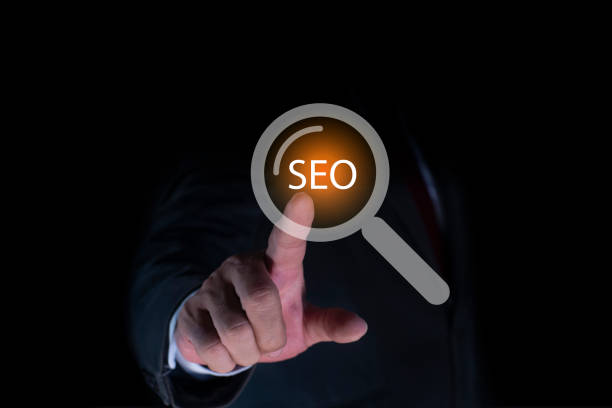
Content is king, and optimizing it for On-Page SEO ensures your website’s reign in search results.
This explanatory and educational section focuses on creating and improving content that is both appealing to search engines and meets user needs.
The first step is to produce unique, comprehensive, and high-quality content.
Content that provides valuable information, practical guidance, or entertainment not only attracts users but also rewards search engines.
Content length is also important; research has shown that longer content (over 1500-2000 words) that delves deep into a topic usually ranks higher because search engines consider it more authoritative and comprehensive.
Proper content structuring is also essential for On-Page SEO.
Using headings (H1, H2, H3, …) to divide content not only increases its readability for users but also helps search engines better understand the page’s structure and main topics.
Each page should have only one H1 tag, which should contain the main keyword of the page.
Short paragraphs, the use of bulleted or numbered lists, and the inclusion of relevant images and videos all contribute to improving user experience and reducing bounce rate, both of which are positive signals for On-Page SEO.
Also, regular content updates are important; fresher content usually performs better in search results.
Content readability is also an important factor in On-Page SEO.
Use simple and fluent sentences, avoid complex technical terms that are unclear to the general audience, or at least explain them.
Using keywords in image file names and their alt tags, though small, can help improve SEO ranking.
The table below shows the main differences between SEO-optimized and unoptimized content:
| Feature | Content Optimized for On-Page SEO | Unoptimized Content |
|---|---|---|
| Keywords | Strategic and natural use, including primary and secondary keywords | Lack of use or unnatural keyword stuffing |
| Structure | Logical headings (H1-H6), short paragraphs, lists | Long, monolithic text, without proper structure |
| Quality and Depth | Comprehensive, accurate, unique, and valuable to the user | Shallow, repetitive, copied, or low-value |
| User Experience (UX) | Readable, engaging, with relevant images and videos, high loading speed | Unreadable, tiresome, no multimedia, low speed |
| Goal | High ranking in search results and user satisfaction | Simply providing information without considering algorithms or users |
| Internal Linking | Contains links to relevant internal and external pages | Absence of links or irrelevant links |
Finally, linking your content to credible and relevant sources (external links) can also increase your page’s authority.
These combined actions help you produce content that not only ranks high in search engine On-Page SEO but also provides an excellent user experience for visitors.
URL Structure, Title Tags, and Meta Descriptions in On-Page SEO

Title Tags, Meta Descriptions, and URL structure are three fundamental elements in On-Page SEO that directly impact how your website appears in search results and its click-through rate (CTR).
This specialized and guide-oriented section will help you optimize these elements in the best possible way.
Title Tag: This tag is the most important On-Page element after the page’s main content.
The title tag is the text displayed in the browser tab and appears as your page’s main title in search results.
To optimize it, you should place the main keyword of the page at the beginning.
The ideal length for a title tag is between 50 and 60 characters to be fully displayed in Google results.
Your title should be engaging and descriptive to encourage users to click.
Avoid excessive use of keywords and ensure each page has a unique title tag.
Meta Description: This short text is a summary of your page’s content that appears below the title in search results.
Although meta descriptions do not directly affect On-Page SEO rankings, they play a crucial role in increasing click-through rates (CTR).
You should provide a compelling and attractive summary of your page, around 150 to 160 characters, to encourage users to click.
Include the main keyword in the meta description as well, as Google might highlight it.
These descriptions should act like an advertisement and clearly indicate what the user will find after clicking.
A compelling meta description can significantly increase your page’s click-through rate, even if its ranking on the first page is lower.
URL Structure: Your page’s URL or web address should be short, meaningful, and contain keywords.
Avoid long and complex URLs that include irrelevant numbers and characters.
Simple and descriptive URLs help users and search engines better understand the page’s content.
For example, instead of “yoursite.com/?p=123”, use “yoursite.com/blog/seodakheli-rahnama”.
Using hyphens (-) to separate words instead of underscores (_) or spaces is the best practice.
These three elements, if properly optimized, can have a tremendous impact on your website’s On-Page SEO performance and make it stand out in search engines.
Attention to detail in this section is the foundation of successful On-Page SEO.
Does your current e-commerce site design lead to losing customers and sales?
Rasaweb is your solution with modern and user-friendly e-commerce website designs!
✅ Significant increase in conversion rates and sales
✅ Strong branding and building customer trust
⚡ Get free e-commerce website design consultation from Rasaweb!
Image Optimization and Website Loading Speed for On-Page SEO
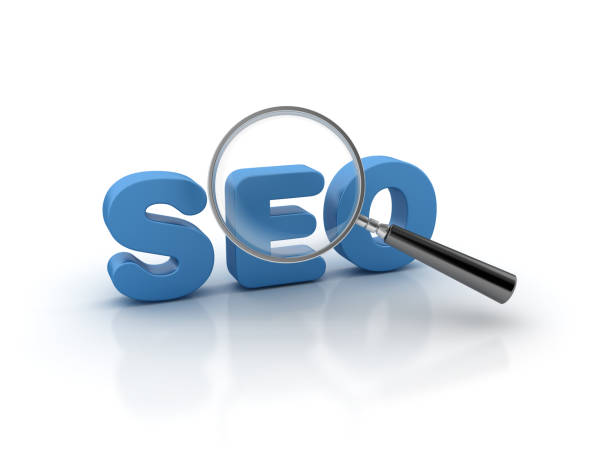
Website loading speed and image optimization are two critical factors that directly impact user experience (UX) and consequently On-Page SEO.
In this analytical and guide-oriented section, we will discuss how to improve these two aspects.
Image Optimization: Images play an important role in visual appeal and conveying content messages, but if not optimized correctly, they can significantly slow down the website.
- Appropriate Size: Before uploading, adjust the image dimensions to the required size for the page.
There’s no need to upload an image with 4000×3000 pixels for display in a 600×400 pixel space. - Correct Format: Use modern and compressed formats like WebP, which have smaller file sizes compared to JPEG and PNG.
If you must use JPEG or PNG, use image compression tools. - Alt Tag: The Alt tag (alternative text) for images not only helps people with visual impairments understand the image content but also provides information to search engines about the image’s content and, consequently, the page’s content.
This tag should be descriptive and contain relevant keywords.
For example: `<img src=“seo-internal-tips.webp“ alt=“On-Page SEO Optimization Tips“>`. - Image File Name: Use descriptive and keyword-rich names (using hyphens) for image files, for example, `on-page-seo-guide.jpg` instead of `IMG001.jpg`.
Website Loading Speed: Site speed is an important Google ranking factor, especially for mobile user experience.
- File Compression: Use tools like Gzip to compress HTML, CSS, and JavaScript files.
- Browser Caching: Enabling browser caching allows visitors to view your pages faster on subsequent visits.
- Reduce HTTP Requests: Minimize the number of files and scripts the browser needs to download to load the page.
- Suitable Hosting: Choosing a quality hosting company with high-speed servers is crucial.
- Code Optimization: Removing unused code (CSS and JavaScript) and compressing them can help improve speed.
- AMP or Responsive Design: Ensure your site is mobile-optimized, either through Responsive Design or Accelerated Mobile Pages (AMP).
Tools such as Google PageSpeed Insights, GTmetrix, and Pingdom Tools help you analyze your site’s speed and receive suggestions for improvement.
By focusing on image optimization and site speed, you not only provide a better user experience but also significantly improve your On-Page SEO ranking.
Internal Linking and Website Navigation Improvement
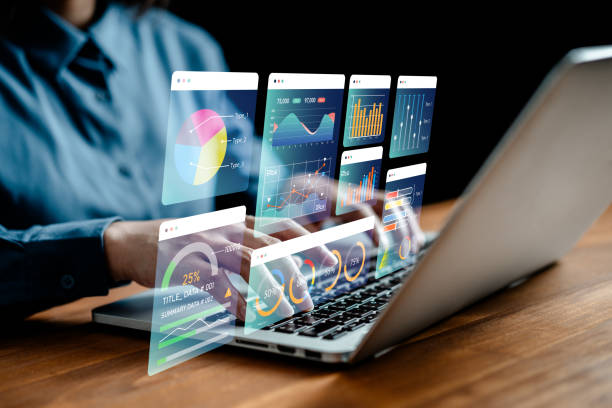
Internal Linking is one of the fundamental pillars of On-Page SEO that is often overlooked.
This educational and specialized section addresses the importance of internal linking and how to improve site navigation.
Why is internal linking important?
- Transfer of SEO Authority and Power: Internal links help the flow of “Link Equity” or “PageRank” throughout your website.
This means that the authority of a powerful page can be transferred to other pages, improving their ranking. - Improved Search Engine Crawling: Internal links help search engines discover and index all pages of your website.
If a page has no internal links, it may be less accessible to search engines. - Improved User Experience (UX): Logical and relevant internal links help users easily navigate your site and find more related information.
This increases user dwell time on the site and reduces the bounce rate, both of which are positive signals for On-Page SEO. - Anchor Text Optimization: Anchor text is the clickable text of a link.
Using descriptive and keyword-rich anchor texts helps search engines better understand the topic of the linked page.
How to do effective internal linking?
- Link to Relevant and Important Pages: Always link from the content you are writing to more relevant and important pages on your site.
These pages can be product pages, services, or other blog articles. - Use Silo Structure: This structure means organizing site content thematically, placing pages related to a topic under a central category or hub and linking to them.
This helps search engines understand your site’s expertise in a particular area. - Link from High Authority Pages: Try to link from highly visited pages or pages that have high SEO authority to other pages.
- Optimize Navigation Menu and Footer: Ensure that your site’s main menu and footer links logically and efficiently to key and important pages.
- Sitemap: Creating and submitting an XML sitemap to search engines helps them find and index all your pages.
A strong internal linking strategy not only helps search engines better understand your site but also significantly improves user experience.
This ultimately leads to increased organic traffic and long-term success in your On-Page SEO.
The Importance of User Experience (UX) in On-Page SEO Strategies
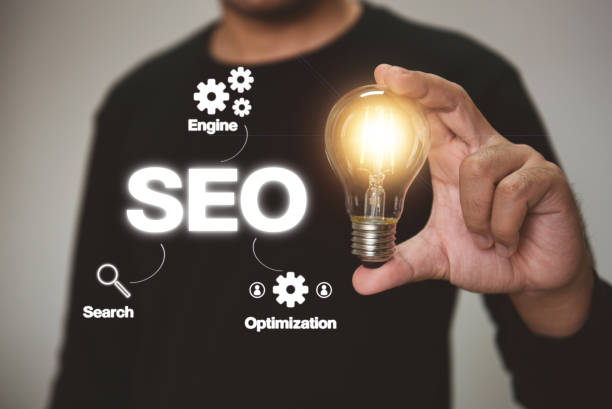
User Experience (UX) is no longer a secondary factor in On-Page SEO; rather, it has become one of its main and inseparable pillars.
This analytical and explanatory section shows you how user-centric design directly impacts your site’s ranking in search results.
Google and other search engines are increasingly focusing on user experience signals to determine a page’s credibility and relevance.
Why is UX vital for On-Page SEO?
- Reduced Bounce Rate: If users quickly leave your site (high bounce rate), this is a negative signal for search engines, indicating that your content is not useful to the user or that you have a poor user experience.
Proper UX design encourages users to stay on the site and view more pages. - Increased Dwell Time: The amount of time a user spends on your page is an important indicator for Google.
Engaging, organized content and an easily navigable website increase dwell time and show Google that your content is useful and valuable. - Usability: A website with high usability means that users can easily find what they are looking for.
Clear menus, efficient search, and simple contact forms all contribute to a better user experience. - Responsiveness (Mobile-Friendliness): Given the increasing use of mobile devices for searching, having a responsive website that displays well on any screen size is essential.
Google has considered mobile-friendliness as a ranking factor for years. - Page Load Speed: As explained in the previous section, high speed is an inseparable part of UX and directly impacts On-Page SEO.
Optimizing UX means looking at your website through the user’s eyes.
Do your pages load quickly? Is the content easily readable? Is the site navigation intuitive and logical? Is the Call to Action (CTA) clearly defined? Answering these questions will help you on the path to improving UX and consequently improving On-Page SEO.
Tools such as Google Search Console and Google Analytics can provide valuable data about user behavior on your site, which you can use to improve UX and On-Page SEO.
Ultimately, the ultimate goal of On-Page SEO is not just to attract traffic, but to retain that traffic and convert it into customers, which is impossible without an excellent user experience.
Tools and Data Analysis in On-Page SEO

To succeed in On-Page SEO, merely implementing techniques is not enough; continuous monitoring and data analysis are needed to identify opportunities and resolve issues.
This specialized and guide-oriented section introduces you to the most important tools and data analysis methods in the field of On-Page SEO.
By using these tools, you can accurately evaluate your website’s performance and adjust your strategies based on real data.
Key tools for On-Page SEO analysis:
- Google Search Console (GSC): This free Google tool is the most essential tool for any webmaster.
GSC helps you monitor your website’s performance in search results.
You can view the keywords users used to find your site, click-through rates, pages with the most impressions, and also technical issues such as crawl errors, indexing problems, and mobile-related issues.
This tool provides valuable data for improving On-Page SEO. - Google Analytics (GA): GA provides more detailed information about user behavior on your site.
You can see where users came from, how long they stayed on the site, which pages they visited, and their bounce rate.
This data helps you improve user experience and identify weaknesses in your content. - Keyword Research Tools (e.g., Ahrefs, Semrush, Moz Keyword Explorer): These tools are very useful for in-depth keyword research, competitor analysis, and finding new content opportunities.
They also help you estimate search volume, keyword difficulty, and user intent for each keyword phrase. - Site Speed Check Tools (Google PageSpeed Insights, GTmetrix, Pingdom Tools): These tools analyze your site’s speed performance and provide suggestions for improvement.
Site speed is an important factor in On-Page SEO. - Crawling and Auditing Tools (Screaming Frog SEO Spider, Sitebulb): These tools allow you to crawl your site like a search engine and identify technical On-Page SEO issues such as broken links, duplicate or missing title tags and meta descriptions, and canonicalization problems.
Data Analysis and Decision Making:
Collecting data is only half the battle; more importantly, it’s the ability to analyze this data and turn it into actionable insights.
Regularly review reports from these tools, identify trends, and prioritize issues.
For instance, if GSC indicates that certain pages have a low click-through rate, they might need their title tags and meta descriptions rewritten.
If GA shows that users quickly exit a page, that page’s content might need improvement or a UX redesign.
Ultimately, a data-driven approach is key to sustained success in On-Page SEO and ensures your efforts are effective and targeted.
Frustrated with your e-commerce site’s low conversion rate? Rasaweb transforms your e-commerce site into a powerful tool for attracting and converting customers!
✅ Significant increase in visitor-to-buyer conversion rate
✅ Unparalleled user experience to boost customer satisfaction and loyalty⚡ Get free consultation from Rasaweb!
Preventing Common On-Page SEO Issues for Your Website

Even On-Page SEO specialists can make mistakes that harm a site’s ranking.
This explanatory and guide-oriented section helps you prevent or resolve the most common issues in On-Page SEO.
By understanding these challenges, you can keep your website on the right track.
Common Problems and Solutions:
- Duplicate Content: This is one of the biggest problems for On-Page SEO.
Search engines get confused when encountering duplicate content and don’t know which version to index.
- Solution: Use canonical tags to tell search engines which version of the content is the original.
Also, create unique content and avoid copy-pasting.
- Solution: Use canonical tags to tell search engines which version of the content is the original.
- Slow Page Load Speed: Slow websites create a poor user experience and are penalized by Google.
- Solution: Optimize images, use browser caching, compress CSS and JavaScript files, and use reliable hosting.
- Broken Links: Broken internal or external links (404 errors) harm user experience and send negative signals to search engines.
- Solution: Regularly identify and fix broken links using tools like Google Search Console or Screaming Frog.
- Weak or Duplicate Title Tags and Meta Descriptions: These elements are the most important factors for attracting clicks from search results.
- Solution: Create unique, engaging, and keyword-rich title tags and meta descriptions for each page.
Adhere to the appropriate length.
- Solution: Create unique, engaging, and keyword-rich title tags and meta descriptions for each page.
- Lack of Mobile Optimization: If your site does not display correctly on mobile devices, you will lose a huge portion of your audience.
- Solution: Use responsive design and test your site with Google’s Mobile-Friendly Test tool.
- Improper URL Structure: Complex and unclear URLs are confusing for both users and search engines.
- Solution: Create short, descriptive, and keyword-rich URLs.
- Low-Quality or Very Short Content: Content that offers little value or is not deep enough will not rank well.
- Solution: Produce comprehensive, unique, and high-quality content that answers user questions.
By observing these tips and conducting regular reviews of your website’s On-Page SEO, you can prevent many common issues and improve your site’s overall performance in search results.
Prevention is always better than cure, especially in the challenging world of SEO.
Future Trends and Conclusion on On-Page SEO
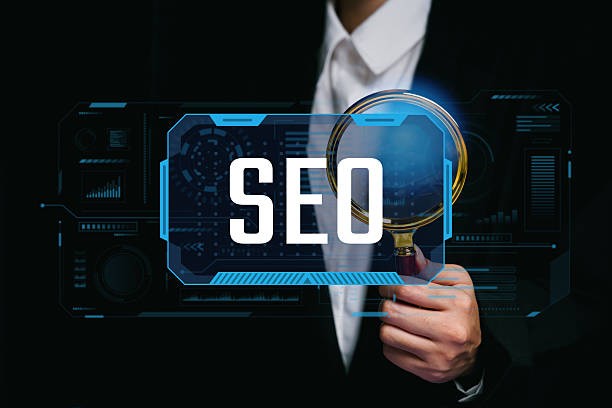
The world of On-Page SEO is constantly changing and evolving.
What is effective today might be less impactful tomorrow due to algorithm changes or technological advancements.
This news, analytical, and thought-provoking section explores future trends in On-Page SEO and provides a comprehensive summary of all topics to prepare you for the future.
Future Trends in On-Page SEO:
- Artificial Intelligence and Machine Learning: Google is increasingly using AI (such as RankBrain and MUM algorithms) to better understand user intent and page content.
This means that On-Page SEO should focus more on creating semantic content and answering complex user questions.
High-quality, comprehensive content that addresses topics from different angles will become more valuable. - Page Experience and Core Web Vitals: Google has officially announced that Core Web Vitals (including largest contentful paint, cumulative layout shift, and first input delay) are ranking factors.
This means that technical website optimization for speed and visual stability is more important than ever. - Voice Search and Image Search: With the expansion of voice assistants and image recognition technologies, optimizing for voice search (usually longer and more conversational queries) and using structured data (Schema Markup) to help search engines better understand visual content will become increasingly important.
- Interactive and Video Content: Users are looking for more engaging content.
Integrating videos, interactive infographics, and other multimedia formats into your On-Page SEO strategy can help increase dwell time and improve engagement signals. - Increased Importance of E-A-T (Expertise, Authoritativeness, Trustworthiness): For sensitive topics (Your Money Your Life – YMYL), Google places more emphasis on the website’s credibility, expertise, and trustworthiness.
This means you must ensure your content is written by experts and is reliable.
Final Conclusion:
On-Page SEO is a long-term investment that yields sustainable results.
By focusing on these principles: producing high-quality and relevant content, intelligent use of keywords, technical site optimization (speed, mobile-friendliness), logical content structuring and internal linking, and continuous improvement of user experience, you can prepare your website for success in search engines and attracting target audiences.
Remember that SEO is a dynamic process and requires continuous monitoring, analysis, and updates.
By following this guide and adapting to future changes, your website will be at its peak not only today but also in the years to come.
Frequently Asked Questions
| No. | Question | Answer |
|---|---|---|
| 1 | What is On-Page SEO? | On-Page SEO refers to a set of actions performed within a website to optimize its pages to achieve a better ranking in search results. |
| 2 | What is the most important factor in On-Page SEO? | High-quality, relevant, and comprehensive content that meets user needs is the most important factor in On-Page SEO. |
| 3 | What role does the Title Tag play in On-Page SEO? | The title tag is one of the most important factors that tells search engines and users what the page content is about. It should include the main keyword and be engaging. |
| 4 | How important is the Meta Description tag? | Although it does not directly affect rankings, it is very effective on the click-through rate (CTR) in search results and encourages users to visit the page. |
| 5 | How is image optimization done in On-Page SEO? | By using appropriate alt tags, compressing image file sizes to increase loading speed, and meaningfully naming image files. |
| 6 | What is the importance of using headings (H1, H2, H3) in On-Page SEO? | Headings help structure content, increase readability, and assist search engines in understanding the hierarchy and sub-topics of the content. |
| 7 | What does Internal Linking mean and what are its benefits? | Internal linking means creating links between different pages of a website. This helps distribute authority, improve user navigation, and assist search engine crawling. |
| 8 | Where should the Focus Keyword be placed on the page? | The main keyword should be placed in the title tag, meta description, H1, first paragraph, naturally throughout the text, and if possible, in the URL. |
| 9 | What is the effect of copied or duplicate content on On-Page SEO? | Duplicate content can harm a site’s ranking and confuse search engines about which version is original, potentially leading to it being flagged as spam. |
| 10 | How important is page loading speed in On-Page SEO? | Page loading speed is an important ranking factor and directly impacts user experience. Slow pages lead to an increase in user bounce rate. |
And other services of Rasaweb Advertising Agency in the field of advertising
Smart Digital Branding: A specialized service for customer acquisition growth based on real data.
Smart Marketing Automation: A fast and efficient solution for user interaction with a focus on SEO-driven content strategy.
Smart Digital Advertising: A fast and efficient solution for campaign management with a focus on marketing automation.
Smart Digital Branding: A combination of creativity and technology to increase sales through personalized user experience.
Smart Advertorials: A new service to improve SEO ranking through optimization of key pages.
And over hundreds of other services in the field of internet advertising, advertising consultation, and organizational solutions
Internet Advertising | Advertising Strategy | Advertorials
Resources
Comprehensive Internal SEO TrainingComplete On-Page SEO GuideOn-Page SEO ChecklistMihan WordPress Internal SEO
? Are you ready to transform your business in the digital world? Rasaweb Digital Marketing Agency, specializing in SEO, online advertising, and user-friendly website design, is your trusted partner on the path to growth and success.
📍 Tehran, Mirdamad St., next to Bank Markazi, Kazerun Jonubi Alley, Ramin Alley, No. 6

